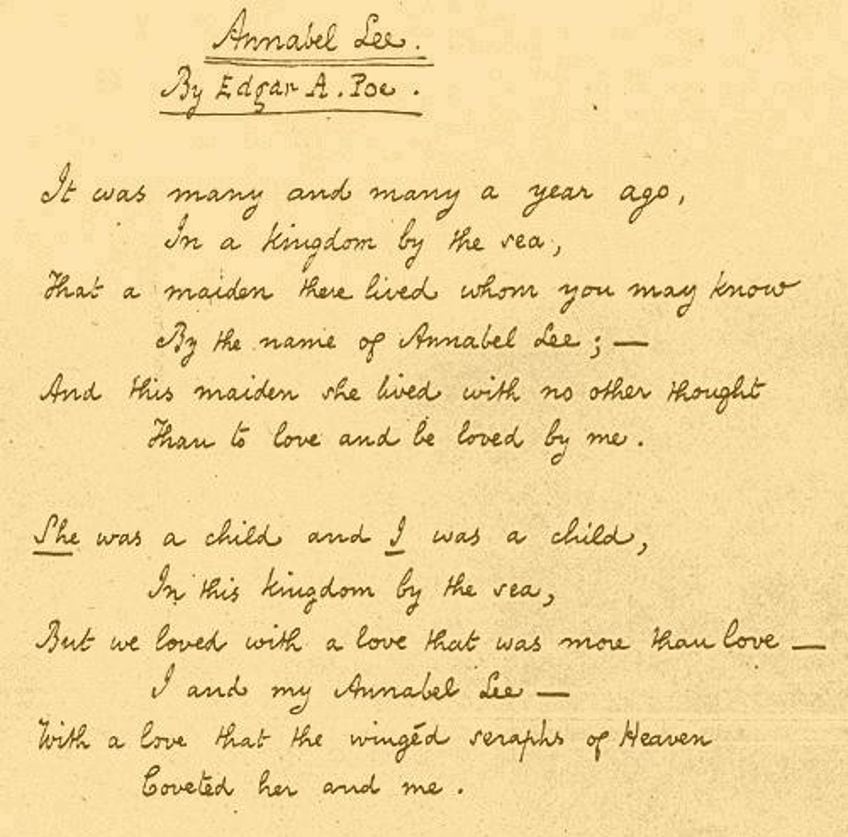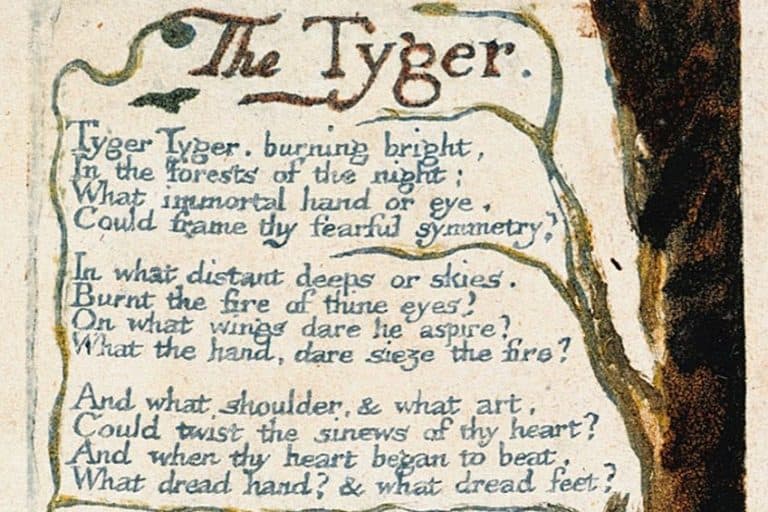Foot in Poetry – A Broad Overview of Poetic Rhythm
There are so many different terms that surround poetic rhythm, and the metrical or poetic foot is one of them. The term, for those unfamiliar with it, will sound strange, but it is a very basic concept that is typically understood at the early levels of poetic analysis. That’s why we are going to have a look at a definition of this concept, the different types of poetic feet, the uses of the idea, and some examples of the foot in poetry. This should help those who would like to learn some more. So, keep reading if that’s exactly what you want to do!
Table of Contents
A Look at Foot in Poetry
When it comes to understanding poetry and poetic analysis, there are a few terms that need to be understood. Many of these terms are interchangeable in some or another way. For instance, the foot in poetry is just another term that is used to describe meter. And meter is another word that is related to the use of rhythm in poetry. It can be easy to become confused by the vast array of words that are all related to one another yet are different from each other or have very specific tiny distinguishing features. This was one of the harder things when it came to my old job as an English teacher. The teaching of poetry can be an especially difficult thing as the language in many poems is already rather complicated, but then you also need to use all these terms to describe everything!

Rhythm is the flow of a poem, and, in my experience as a teacher, this is one of the harder aspects of poetry that needs to be taught to a student. The only real way to learn this idea is to actually sit there and read poetry with a very close eye. You must sound out the words and hear how they sound. This is what we will encourage today. You will learn meter best by engaging with it on a deeper level and sounding everything out. However, before we hop to that, let’s get to a short summary of things.
Summary of Foot in Poetry
Before we dive headfirst into a far lengthier examination of the question, “What is a poetic foot?”, we are first going to check out some summarized points. These points are for anyone who may not have the time for this whole article. So, have a look and check out these basic points:
- The foot in poetry refers to a metrical unit. The central idea behind the foot in poetry is that it shows the way that stressed and unstressed syllables are used in specific arrangements. The term is also known as a “metrical foot”, and, as a result, it is part of meter.
- The foot in poetry is part of rhythm in general. Seeing as an example of foot in poetry is simply an aspect of meter, the metrical foot is part of rhythm in general. This is the term that refers to the flow of a poem. The use of stressed and unstressed syllables in specific arrangements contributes to how a poem is read.
- The foot in poetry has many different varieties. There are numerous ways that the foot in poetry can be arranged. Some of the most notable forms of metrical feet include the iambic, trochaic, and spondaic forms of meter. However, there is quite a large variety of other examples of the form.
With this summary of things out of the way, we can instead focus on the remainder of our look at the foot in poetry. This is a very basic concept in poetry and, as such, we should have a lengthier look at it.
Keep reading the next section for a definition of the idea in more detail.
A Definition of Foot in Poetry
The idea of the foot in poetry is not a complicated thing in the slightest. So, what is a poetic foot then? In very basic terms, and these are the only real terms you’ll need anyway, it is a specific unit of meter that can be found within poetry. This means that it refers to the specific arrangement of syllables in a poem based on whether or not they are stressed or unstressed. In terms that are even more specified, the “foot” in question refers to each unit within a larger line framework.
Let’s use an example to illustrate this because I’ve often found that doing that works best. Each line of a poem that is written with specific meter will be made up of a number of beats. So, if it were to have iambic pentameter as its metrical arrangement, it would have five pairs of two syllables, and each of those pairs would be arranged as one unstressed and one stressed syllable. And this pair is the foot.

Basically, the “iambic” part refers to the kind of stress and the number of syllables in the foot, and “pentameter” refers to how many of those feet are used in each line. A poetic foot does not need to be only two syllables, it could be three. For instance, anapestic meter includes three syllables! However, that will be explored later in a lot more detail.
This is a very simple and fundamental term in poetry that does not have another deeper meaning. This is a term that is essentially as important as knowing a term like “stanza” or “rhyme” in poetic analysis. Every example of foot in poetry is very simple, but the reasons that poetic feet are used at all are far more varied. We will get to that. Hopefully, this explanation of the concept itself is a good one. Many academic texts will insist on explaining concepts in difficult ways, but there really isn’t anything complicated about the foot in poetry. Don’t let anyone tell you otherwise! However, the reasons for its specific use can sometimes be a little bit more complicated.
The Different Types of Poetic Feet
Many different varieties of poetic feet can be found in poetry, and we are going to have a quick look at some of the most basic of these varieties. You must also keep in mind that the concept of meter is far broader than the foot in poetry. The foot is only a part of meter as a larger category, and so any discussion of meter will also, inevitably, become a conversation about foot in poetry too.
Some of the most basic poetic feet are types that make use of two syllables. The iambic meter is made up of a pair of syllables, and they are arranged as one unstressed and one stressed. The opposite of this form is the trochaic meter. However, you could also look at something like a spondaic foot, which is comprised of two stressed syllables, and the opposite of this one, in which there are two unstressed syllables, is a pyrrhic meter.
These are the two-syllable varieties of foot in poetry.

However, a foot could also be made up of three syllables. These include the use of two unstressed and one stressed, which is anapestic meter. There could also be one stressed and two unstressed, and this would be called dactyllic. There could even be one unstressed, one stressed, and another unstressed, and this is known as an amphibrachic meter. These are the varieties that make use of three syllables.
It can be easy to view these in pure isolation but remember that these terms are used within a broader poetry context. So, they are typically arranged within lines that make use of a number of them. For example, if there are four of these feet in each line, then it is known as a tetrameter. So, if a poem uses iambic tetrameter, that means that each line has eight syllables, seeing as iambic meter uses a two-syllable structure. The number of syllables in each of the lines of a poem can have immense variability for many potential reasons.
The Uses of Foot in Poetry
Every different instance of poetic feet in a poem can be used for different reasons. They all add to the rhythm, but the way in which they are used contributes to the specific mood that that rhythm is being used to create. They can often be somewhat onomatopoeic in their presentation and so emulate something natural. For instance, iambic meter is noted for being quite similar to everyday language.
There are many different uses of metrical feet, but we are only really going to learn those few things by actually having a closer look at a number of examples of foot in poetry. This is the best way to learn, or at least the best way that I found to teach it to my own students, and so let’s try that!
A Few Examples of Foot in Poetry
The best way to understand an example of foot in poetry is to look at how poetic feet are used in poetry in the first place. This list will go over some of the poems that make use of specific forms of meter, but we will only do so very briefly. Let’s investigate some of these examples of the foot in poetry.

Shall I compare thee to a summer’s day? (1609) by William Shakespeare
| Date Published | 1609 |
| Type of Poem | Shakespearean sonnet |
| Rhyme Scheme | ABABCDCDEFEFGG |
| Meter | Iambic |
| Topic | Beauty |
Shall I compare thee to a summer’s day? is, like all Shakespearean sonnets, an example of iambic meter. It uses this unstressed and stressed syllable pairing to create a steady rhythm throughout the poem.
This variety of the foot in poetry is often used to make a more natural flow to the writing in question.

The Garden (1681) by Andrew Marvell
| Date Published | 1681 |
| Type of Poem | Lyric poem |
| Rhyme Scheme | AABBCCDD |
| Meter | Pyrrhic |
| Topic | Life, time, and love |
The Garden is a poem that makes good use of the more unusual two-syllable structure known as pyrrhic poetry. In this case, the meter, which consists of two unstressed syllables, is used at various points to add a certain bouncy musicality to the poem in question.
However, the poem also uses iambic meter, and so these two varieties are mixed together.

The Tyger (1794) by William Blake
| Date Published | 1794 |
| Type of Poem | Lyric poem |
| Rhyme Scheme | AABB |
| Meter | Trochaic |
| Topic | Spirituality |
The Tyger is a poem that makes strong use of trochaic meter. This reverse of the iambic meter is used to heighten the stress on the first syllable to add to the weight in general. The Tyger is by far one of the most famous William Blake poems, asking us whether to appreciate and understand beauty requires the understanding of ferocity and anger.
The trochaic meter adds a rhythmic quality that has a stronger force behind each line as the stressed syllable comes first.

The Destruction of Sennacherib (1815) by Lord Byron
| Date Published | 1815 |
| Type of Poem | Narrative poem |
| Rhyme Scheme | AABB |
| Meter | Anapestic |
| Topic | The story of Sennacherib |
The Destruction of Sennacherib is a great instance of a poem that makes use of this three-syllable metrical structure. The effect that is produced by this use of two unstressed and one stressed syllable is a sort of action-oriented feeling.
The two short beats followed by the longer one emphasize the dramatic events depicted.
Pied Beauty (1918) by Gerard Manley Hopkins
| Date Published | 1918 |
| Type of Poem | Curtal sonnet |
| Rhyme Scheme | ABCABC DBEDE |
| Meter | Spondaic |
| Topic | Hymn to god |
Pied Beauty is a great example of a poem that makes use of two stressed syllables in a row. This creates a greater sense of momentum in the text. However, it is not the only form of metrical structure used in this particular text. It operates alongside other forms of the foot in poetry to add to the general feeling of the poem.
Today, we have examined the use of the foot in poetry, and it is a very pervasive and important part of poetry in general. This overview should be beneficial to those who did not understand this particular concept in poetry. It can be hard to read poetic feet at first, but practice makes perfect. If you want to get better at it, you need to grab some poems and attempt to read out where the particular stress can be found within each of those words!
Frequently Asked Questions
What Is a Poetic Foot?
This term describes the smallest unit of meter. Each metrical structure is made up of a specific arrangement of syllables based on which are stressed and which are unstressed. The foot is the term used for each pair or trio of syllables that make up meter in general.
What Are the Different Types of Poetic Feet?
There are many different types of poetic feet. Some of the most notable include iambic, trochaic, and spondaic meter. However, there are many other types of poetic feet that exist and can be analyzed in poetry. Each type has its own specifics, such as anapestic meter being made up of three syllables arranged as unstressed-unstressed-stressed.
What Are Some Prominent Examples of Poetic Feet?
There are many poems that use specific instances of poetic feet, such as Shall I compare thee to a summer’s day? (1609) by William Shakespeare being an example of iambic meter, The Tyger (1794) by William Blake being an instance of trochaic meter, and Pied Beauty (1918) by Gerard Manley Hopkins having spondaic meter. There are far more types of foot in poetry than only those that have been listed here.
Justin van Huyssteen is a freelance writer, novelist, and academic originally from Cape Town, South Africa. At present, he has a bachelor’s degree in English and literary theory and an honor’s degree in literary theory. He is currently working towards his master’s degree in literary theory with a focus on animal studies, critical theory, and semiotics within literature. As a novelist and freelancer, he often writes under the pen name L.C. Lupus.
Justin’s preferred literary movements include modern and postmodern literature with literary fiction and genre fiction like sci-fi, post-apocalyptic, and horror being of particular interest. His academia extends to his interest in prose and narratology. He enjoys analyzing a variety of mediums through a literary lens, such as graphic novels, film, and video games.
Justin is working for artincontext.org as an author and content writer since 2022. He is responsible for all blog posts about architecture, literature and poetry.
Learn more about Justin van Huyssteen and the Art in Context Team.
Cite this Article
Justin, van Huyssteen, “Foot in Poetry – A Broad Overview of Poetic Rhythm.” Art in Context. January 10, 2024. URL: https://artincontext.org/foot-in-poetry/
van Huyssteen, J. (2024, 10 January). Foot in Poetry – A Broad Overview of Poetic Rhythm. Art in Context. https://artincontext.org/foot-in-poetry/
van Huyssteen, Justin. “Foot in Poetry – A Broad Overview of Poetic Rhythm.” Art in Context, January 10, 2024. https://artincontext.org/foot-in-poetry/.









